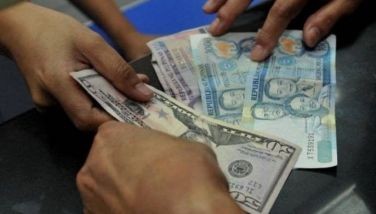Being relevant in the mobile Filipino age

It’s amazing how Filipinos have leaped from being the texting capital of the world to now being the selfie capital of the world, and in some instances, being the social media capital of the world. And this is all thanks to the entry of cheap smartphones in the Philippines.
Most Filipinos cannot endure being separated from their smartphones. They feel uneasy about not being able to check on messages at regular intervals during the day, and not just through the regular texting channels provided by their mobile line provider, but through the various new messaging apps available on data or free Internet like Viber, Messenger, and Line.
Filipinos have taken to Instagram and Twitter on their smartphones like ducks to water. In fact, the Philippines made history recently when it broke Twitter’s record of the most number of tweets with #AldubMostAwaitedDate and #NationalPabebeWaveDay.
For advertising in the Philippines, this represents a multitude of opportunity that is unique to our situation as a developing country. Most Filipinos may still be averse to using their smartphones to purchase items or pay their bills, but the numbers, though still small, are rising.
Double-digit growth
In developed countries like the United States, purchases through the Internet either through smartphones or fixed lines (desktop PCs) are growing at double-digits. This may still not be the desired figures of advertisers on digital media, but it’s encouraging enough especially with emerging consumer trends these days.
In 2008, it was boldly predicted that mobile use would surpass fixed line Internet by 2014, and this became a reality as more powerful and affordable smartphones and tablets came into the market.
Correspondingly, in the US in particular, digital spend in mobile advertising doubled last year to $28.7 billion (total digital ad spend was at $60 billion, while total ad spend was at $187 billion in 2015), and is still expected to grow by double digits in the next five years.
According to researches, people are using their smartphones more and more to search of items they need. Almost half, or 48 percent, access a search engine when interested in automotives, home and garden items, or apparel and beauty products.
A third of smartphone users start on branded websites for their financial transactions, when buying particular apparel or beauty products, or automobiles. About a fourth favor with branded apps like Nike’s (for sports), Kraft’s (for food), or BMW’s (for BMW owners) and more car companies to search for stuff.
Targeting audiences
Omnicom Media Group (OMG), which specializes in marketing communications and which has an office here in the Philippines, came up with some useful data on why Philippine companies should look at mobile advertising in their future spend.
The company claims that mobile phones to date already outnumber the population by five percent, and that smartphones are expected to overtake feature phones before the end of the year. And while smartphones may be the most accessible platform today, it remains to be the least maximized in terms of advertising.
Smartphone advertising, though, needs to be really focused especially with the number of existing and new gadgets (smartphones, tablets, smart TVs, gaming consoles), as well as the different types of channels available (through search engines, dedicated app, existing branded apps, etc.)
Then there is also the way consumers use their smartphones. In the US, majority still spend more time with their mobiles to play games. Only 26 percent of the time is spent on social networking, 10 percent on entertainment and another 10 percent on utilities.
The rest of the cake goes to accessing news (two percent), using productivity tools (two percent), as an aid to health and fitness (one percent), and for lifestyle (one percent).
Of course, Filipinos may have an entirely different profile, which is why it is important to get good data when appropriating aside advertising money on smartphone advertising.
Increasing attachment
Interestingly, OMG says that four out of 10 mobile Filipinos have to check their mobile phones every hour or so, starting from the time they wake up and just before they get to bed. It has become their best buddy, and have become quite dependent on the varied apps that they have accessible on their mobile screens.
Most commonly used apps are the camera, e-mail, browser, utilities, and chat. Music, games, video, books, and niche apps are the favorite entertainment of Filipinos smartphone users.
Nine out of 10 people, says OMG, also feel uneasy without their mobile phones for fear that they may be missing out on important news either in the world or their immediate social media environment. Because of this, Filipinos need to have their smartphones on hand at all times.
Such attachment to their smartphones is a good reason why mobile advertising is something that advertisers in the Philippines must seriously consider. According to OMG, mobile ads have already aroused the Filipinos’ curiosity, with 77 percent claiming to have clicked on a mobile ad.
OMG also claims that nine out of 10 Filipinos actually want to be shown ads that they have an interest in. Also, 82 percent of Filipinos are attracted to promos, which is probably why 70 percent of ads are pegged to discounts or deals.
Furthermore, OMG states that an estimated 84 percent of Filipinos will explore and search about a brand after seeing its mobile advertisement, and 30 percent will voice their opinions about their experience with a certain brand on social media.
Focus on cost-effectiveness
Companies that specialize in digital advertising, specifically understanding how consumers behave, will really have a field day in the coming years as more Filipinos turn to their smartphones to find information about things they need or want to purchase.
While the cost of advertising in digital media is still way below the rates for print or broadcast, the ability to tailor-fit mobile ads to specific audiences, even placement at the most cost-effective hours, will make it truly cost-effective.
Facebook and Twitter
We are actively using two social networking websites to reach out more often and even interact with and engage our readers, friends and colleagues in the various areas of interest that I tackle in my column. Please like us at www.facebook.com and follow us at www.twitter.com/ReyGamboa.
Should you wish to share any insights, write me at Link Edge, 25th Floor, 139 Corporate Center, Valero Street, Salcedo Village, 1227 Makati City. Or e-mail [email protected]. For a compilation of previous articles, visit www.BizlinksPhilippines.net.
- Latest
- Trending





























